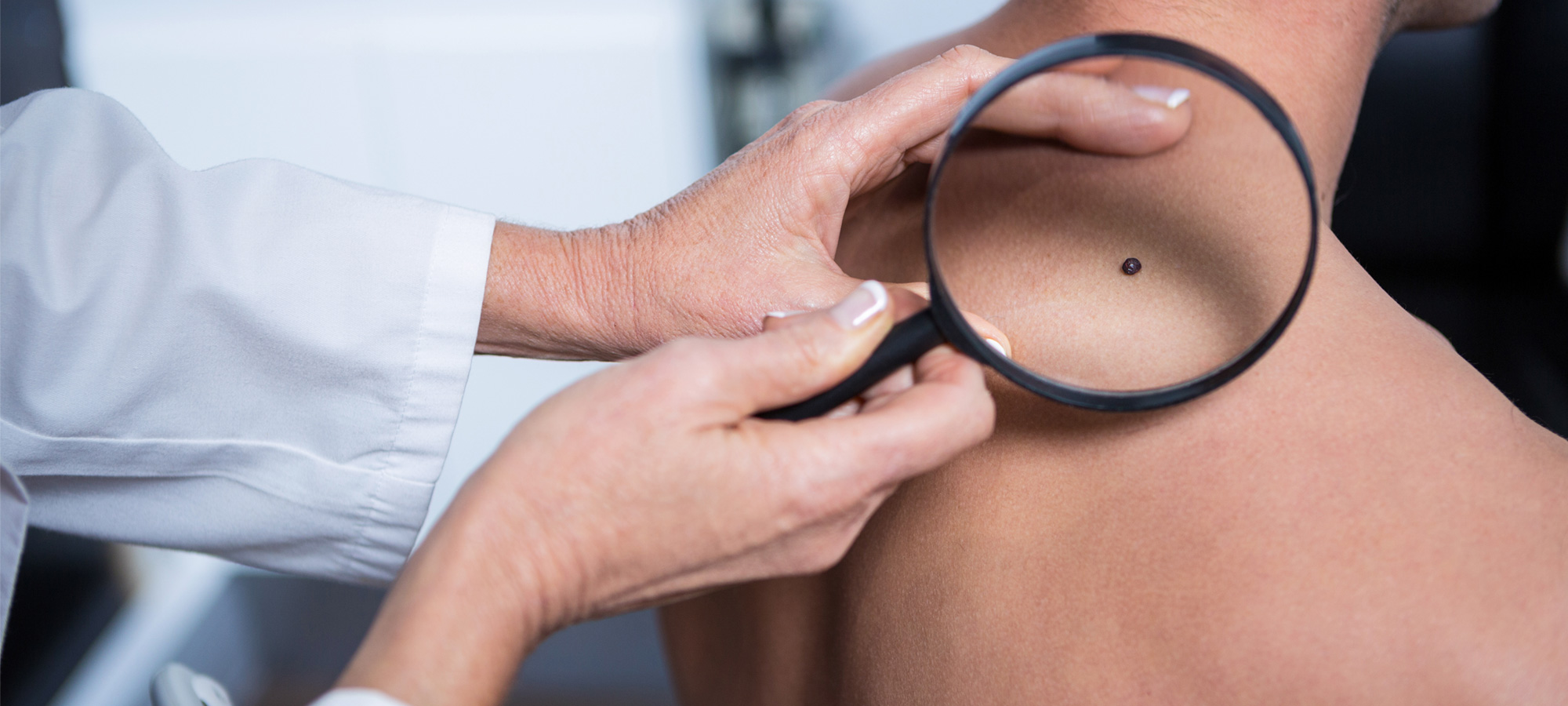| Dermatology: Principles and Practice Strategies for the Primary Care Office |
| Mon May 13, 2019 - Fri May 17, 2019 |
| 8:00am-12:15pm |
| The Westin, Sarasota, Florida |
| SEMLA-3320190513 |
|

Presented By
Presenter
-
O. Fred Miller, III, M.D. (Learn More)

Associate and Director Emeritus, Department of Dermatology, Danville, PA -
Michele S. Maroon, M.D. (Learn More)

Associate, Department of Dermatology, Danville, PA
Course Outline
Day 1
Introduction – Essentials of Dermatology Diagnosis.
Upon completion of this session, the participant should be able to: COMP^
- Approach dermatologic disorders with a consistent and logical method.
- Interpret the role of “color” in the diagnosis of cutaneous lesions.
- Select the appropriate therapy for common disorders.
Common Problems in Office Dermatology.
Upon completion of this session, the participant should be able to: COMP, GL
- Develop a differential diagnosis of common disorders based on lesion morphology and distribution.
- Differentiate the many manifestations of cutaneous fungal disease.
- Analyze fungal foot and nail changes and select the appropriate therapy as per the “Choosing Wisely: Am ACAD of Dermatology 2013” guidelines.
Problems in the Sun, Part I: Solar Radiation, Photodamage, Actinic Keratosis, Photosensitivity Reactions.
Upon completion of this session, the participant should be able to: COMP, EBM
- Acquire a basic understanding of both therapeutic and harmful effects of ultraviolet radiation in dermatology as per 2016 EBM and 2010 AAD position statements.
- Recognize common photosensitivity disorders, and develop an approach to diagnosis and treatment of these conditions.
- Gain a clinical understanding of the diagnosis of actinic keratosis and approach to “lesion” vs. “field” therapy as per the referenced 2014 EBM.
Problems in the Sun, Part II: Non-Melanoma Skin Cancers, Sun Protection.
Upon completion of this session, the participant should be able to: COMP, EBM
- Identify clinical features of non-melanoma skin cancer and develop a treatment and follow-up approach to these lesions as per the referenced 2015 evidence.
- Demonstrate increased awareness of the incidence and associated morbidity with NMSC in transplant patients, and facilitate appropriate skin cancer screenings.
Outline appropriate sun protective measures for your patients as per the FDA standards and AAD recommendations.
Day 2
Common Tumors in the Office Setting, Part I: Warts, Mollusca, Fibrous Tumors, Cutaneous Horns, Acanthomas.
Upon completion of this session, the participant should be able to: GL, COMP
- Devise a treatment plan for common tumors, which may include observation, biopsy, removal, and referral.
- Recognize the multiple cutaneous manifestations of warts and “wart-like” lesions and develop a stepwise treatment approach based on literature review and the British Association of Dermatology Treatment Guidelines.
Common Tumors in the Office Setting, Part II: Common Neoplasm of Head and Neck, Cysts, Vascular Tumors, Dermatofibroma, Keratoses, Lipoma, Soft Tissue Growths, Granulomas, Metastatic Carcinoma, Lymphoma.
Upon completion of this session, the participant should be able to: COMP^
- Develop an approach to common dermal tumors, including most appropriate type of biopsy based on pathophysiology.
- Initiate systemic evaluation in setting of certain skin lesions that may be associated with underlying medical conditions.
- Outline and institute appropriate systemic evaluation for malignancy in setting of newly diagnosed extramammary Paget Disease as proposed by Mayo Clinic Guidelines.
- Demonstrate awareness of guidelines and implementation and/or appropriate referral for managing infantile hemangiomas as per the American Academy of Pediatrics.
Contact Dermatitis.
Upon completion of this session, the participant should be able to: GL, COMP
- Plan the testing for identification of allergens in contact dermatitis.
- Distinguish and treat poison ivy, poison oak, and poison sumac.
- Detect common contactants seen in the office setting.
- Develop a treatment plan for various types of contact dermatitis while considering the British Association of Dermatology Tx Guidelines.
Leg Ulcers and the Principles of Wound Care.
Upon completion of this session, using the Wound and Regeneration Guidelines for the Management and Treatment of Venous and Arterial Ulcers (2006), the participant should be able to: EBM, GL, COMP
- Differentiate and treat leg ulcers, based upon etiology, and the Guidelines of the American Academy of Dermatology for treating venous, arterial, diabetic associated and pressure ulcers.
- Apply the basic principles of wound care.
Appraise the rationale for various wound dressings.
Day 3
Dermatologic Manifestations of Systemic Disease.
Upon completion of this session, the participant should be able to: EBM, GL, COMP
- Identify cutaneous markers of certain systemic diseases.
- Distinguish specific and nonspecific findings in relationship to underlying disease.
- Evaluate pruritus and differentiate those cases associated with systemic disease vs. primary cutaneous disease, including treatment of atopic dermatitis in accordance with AAD Guidelines.
Case Studies in Dermatology.
Upon completion of this session, the participant should be able to: EBM, GL, COMP
- Create a differential diagnosis based on clinical presentation and patient history.
- Appreciate the importance of morphology and pattern recognition in cutaneous disorders.
- Develop an approach to treatment based upon the AAD Guidelines as well as those of the British Association of Dermatology for Lichen sclerosus.
Malignant Melanomas, Part I.
Upon completion of this session, the participant should be able to: EBM, GL, COMP
- Utilize the ABCDE approach to the description of pigmented lesions and features of melanoma.
- Analyze the biology of melanoma.
- Appraise and employ the AAD Guidelines of Care for the Management of Primary Cutaneous Melanoma.
- Refer for a surgical approach, as per the NCCN (National Comprehensive Clinical Network) Guidelines for melanoma.
Malignant Melanomas, Part II.
Upon completion of this session, the participant should be able to: COMP, GL
- Appraise “dysplastic nevi” and describe the relationship between dysplastic nevi and melanomas.
- Develop an approach to examination, testing and follow up of families with dysplastic nevi and melanomas as per the 2013 NCCN guidelines.
Recommend to patients the methods of photoprotection and the relationship of the sun to melanomas as per the 2014 NCCN guidelines for patients.
Day 4
Acne, Part I: Pathophysiology, Recognition and Treatment.
Upon completion of this session, using evidence-based guidelines of the AAD, the participant should be able to: EBM, GL, COMP
- Characterize types of acne lesions and determine appropriate therapy based on pathophysiology.
- Develop a therapeutic ladder with a clear understanding of treatment indications, expectations, and side effects.
- Recognize current issues regarding usage of isotretinoin and long-term oral antibiotics to include the AAD Guidelines for prescribing Isotretinoin in females of childbearing potential.
Acne, Part II: Identification and Treatment of Acne, Acneiform Eruptions and Rosacea.
Upon completion of this session, the participant should be able to: COMP, EBM
- Recognize various acneiform eruptions to include post-adolescent acne and characteristics.
- Analyze testing results to distinguish such conditions, including culture and biopsy when appropriate, and initiate therapy.
- Diagnose and treat rosacea and consider possible association with Parkinson’s disease as per published evidence.
Herpes Simplex and Zoster; Lichen Planus.
Upon completion of this session, the participant should be able to: COMP, EBM
- Differentiate herpes simplex and herpes zoster based on morphology and distribution of lesions and laboratory testing.
- Analyze the varied manifestations, reactivation complications of herpes zoster as referenced in the 2011 Journal of Infectious Diseases.
- Determine an appropriate treatment plan for herpes simplex and herpes zoster as per 2011 FDA and Mayo proceedings recommendations.
- Evaluate the cutaneous spectrum of lichen planus.
Psoriasis.
Upon completion of this session, using AAD Guidelines for Psoriasis Therapy, the participant should be able to: EBM, GL, COMP
- Evaluate the spectrum of classical and subtle cutaneous changes of psoriasis.
- Formulate the basic pathophysiology of psoriasis.
- Approach topical psoriasis therapy with a basic algorithm.
- Develop a treatment plan based upon the AAD Guidelines for Management of Psoriasis and Psoriatic Arthritis and Use of Biologics, Phototherapy and Chemotherapy.
Day 5
Pathophysiology and Treatment of Foot Ulcers: Diabetic Ischemic and Neuropathic.
Upon completion of this session, using the Wound and Regeneration Guidelines for the Treatment of
Diabetic Foot Ulcers (2006), the participant should be able to: GL, COMP
- Distinguish between ischemic and neuropathic etiologies of diabetic foot
- Treat neuropathic ulcers successfully with debridement and weight off
- Recommend selected footwear in the patient with neuropathy.
“Cases That Have Taught Me a Lesson.”
Upon completion of this session, the participant should be able to: COMP^
- Detect skin changes that point to specific and varied cutaneous disorders encountered in the office.
- Appraise and recommend therapy for perioral dermatitis.
Drug Eruptions: Etiology, Differential Diagnosis and Treatment.
Upon completion of this session, the participant should be able to: COMP, EBM
- Recognize the numerous eruptions, such as DRESS, SJS and TEN, induced by
- Recognize, identify and avoid the “most common” suspected drugs in producing certain reaction patterns.
- Employ treatment of
Infections in Dermatology.
Upon completion of this session, the participant should be able to: GL, COMP
- Categorize various infectious processes involving the
- Diagnose and treat common cutaneous infections, recognizing indications for biopsy in certain infectious
- Diagnose and treat common cutaneous infections based upon the IDSA Guidelines for MRSA and Skin and Soft Tissue
Accreditation
This program is not yet approved for CME credit.


